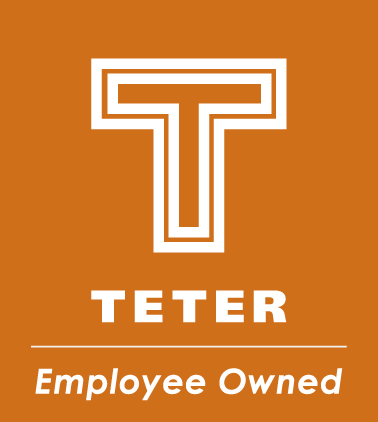While there is no perfect HVAC system, the best HVAC systems are those that are well managed, well maintained, and designed with flexibility to combat diseases such as COVID-19. HVAC systems cannot prevent transmission of COVID-19, and if not managed properly, they can actually make the spread worse. However, with a few key operational features, HVAC systems can greatly reduce the risk of spread by reducing the concentration of airborne particles.
TETER recommends the following considerations, in addition to recommending that owners and operators create an implementation plan to address deficiencies and to prioritize improvements and document steps taken along the way.

SPEED UP THE HALF LIFE
Solar exposure and improved room ventilation have both been shown to reduce the concentration and growth of viral aerosol concentration.

AIR CLEANLINESS
Improve Engineering controls.
- Increase outside “fresh air” volume supplied by each HVAC system as much as the existing system capacity will support. This will help to dilute the concentration of airborne particles.
Install MERV-13 filters where possible.
- If more “fresh air” is not available, then use MERV-13 filters, which have been shown by ASHRAE to reduce aerosols similar in size to COVID-19 (100nm). Most systems can accommodate the MERV-13 filter dimensions in lieu of more traditional MERV-6 or MERV-8.
NOTE: Why not HEPA filters? Most systems are not designed to handle HEPA filter sizes or pressure drops.
- However, MERV filters can still have an adverse effect on your system by reducing air flow. In some cases, this might be acceptable or the system may be easily modified to accommodate. In other cases, this might prove to be detrimental to your system.
Increase outside air ventilation rates.
- Air at a higher velocity in the room can result in the aerosol being carried much farther, thus transmitting to people outside of the CDC recommended 6-foot distancing radius. To mitigate this, ensure at least a minimum flow rate that achieves 6 air changes per hour of fresh and/or filtered air. Relocate supply grilles or adjust directional louvers to minimize drafts.

UV LIGHTS
If your system allows, consider if UV-C is a good fit for you.
UV-C (the short-wave form of UV) has proven to disrupt the DNA/RNA of some diseases, and is recognized by ASHRAE and the Illuminating Engineering Society as an effective approach, along with other measures, to combat COVID-19.
- UV-C is applied within your ducts or equipment and requires specific criteria in the air-steam to ensure effective dosage level.
- UV-C is an additional device in your airstream and requires more maintenance.
- UV-C is the safest option of UV spectrum (UV-B, UV-A), but it still presents unique safety concerns in regards to exposure to the skin and eyes. Thus, additional safety protocols need to be hard wired into your system to prevent exposure.
A note on Emerging Technologies
The COVID-19 pandemic has resulted in the emergence of new technologies, many of which are in the experimental stage and are recognized by ASHRAE as having an effectiveness ranging between “ineffective to very effective.”
Careful consideration of both direct and unintended risks, application appropriateness, maintenance requirements, and availability need to be carefully investigated and reviewed prior to implementation.
Whether you have a plan and need help implementing it, or you are working to figure out where to start, we encourage you to call us. We’re here for you, ready to continue building a better valley.
Authors
Jon Schlundt, PE
Partner/ Mechanical Engineer
Steven Jones, PE
Mechanical Engineer


